In this beautiful Winelands garden, flowing borders and curving lawns are enhanced by the magnificent mountain backdrop
As one of the many generations to look after and nurture the beautiful garden at Cavers Guest House, near Bedford in the Eastern Cape, Mary Ross spent 40 years honing and perfecting her gardening skills before moving to a newly built house in the Cape Winelands.
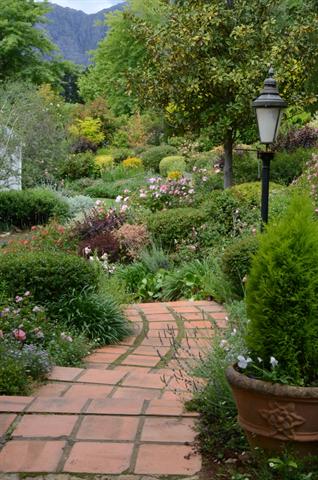
“Making the adjustment was remarkably easy,” she says. “Having grown up in the Cape, I was familiar with the climate and local conditions, while starting from scratch was also not as challenging as it could have been as I had help from our experienced staff at Cavers. In fact, it was wonderful to have a clean canvas to work with.”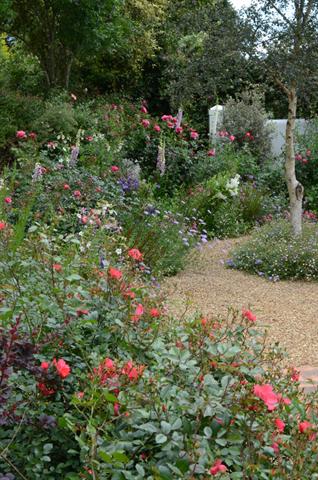
Situated on a steep, north-facing slope in what used to be a plum orchard, Mary’s new home was surrounded by a bank of bare, red soil on two sides and a sheer two-metre drop on the others. Any other gardener would have found establishing a garden here more than daunting, but Mary’s many years of gardening experience stood her in good stead.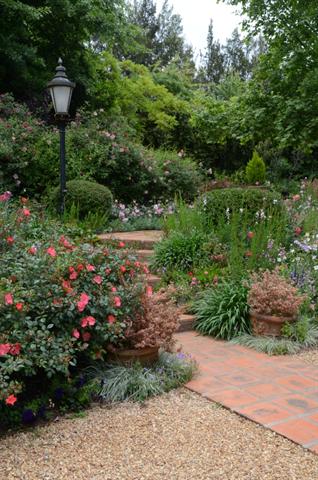
The mountains, a dominant feature of the landscape, were her starting point. “I remembered some advice given to me by world-renowned English landscaper John Brookes on one of his visits to South Africa. He said to always consider the skyline and plan your garden around it. This was particularly relevant here where I’m surrounded by the Simonsberg and Jonkershoek mountains.”
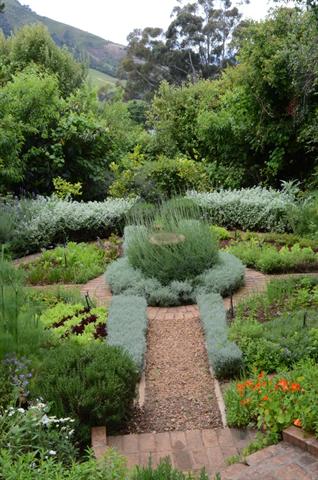
Next on her list was establishing a good foundation of shrubs and trees chosen for both their foliage and flowers. With her eye for colour, proportion and balance, and advice from her good friend gardening guru Keith Kirsten, Mary laid out the garden using wide borders and curving lawns. Instead of dominating the space, the mountains form a spectacular backdrop and the careful positioning of plants frames strategic views and draws the eye through the garden.
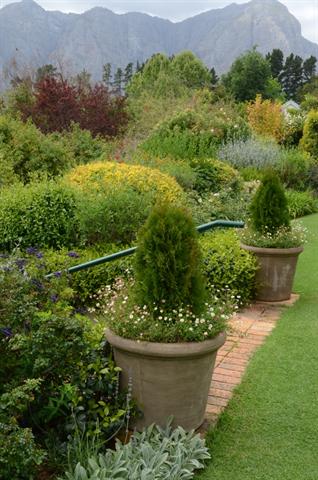
The design also entices you to investigate what treasures are hidden from view. One of these is a terrace below a retaining wall, a quiet, secluded area with a cooling pond and rose-clad pergolas accessed from steps leading from the front lawn.
Fortunately the soil is so good (it’s a rich red loam) she seldom needs to feed the lawn but does have to treat it for caterpillars. Adding interest to the garden is the use of gravel rather than grass in the smaller more intimate areas that link the house and patios.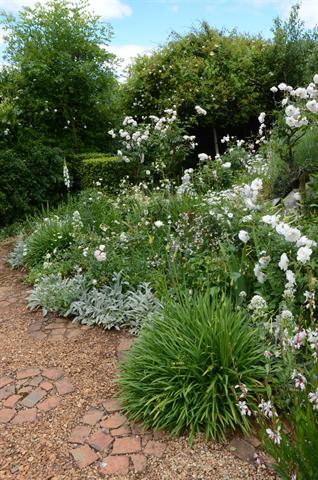
Along the wide sloping border near the entrance, golds and greens subtly contrast with shades of plum, bronze and burgundy. In the west-facing borders golds, greys and blues predominate, while near the bedrooms are plants in feminine pinks and blues. Cooling creams, whites and greens were used in the lower garden and near the patio. And the sweet scent of roses is everywhere. Mary has included many roses because, as she explains, they grow so well that it makes gardening much easier and more pleasurable. “If I could only have one rose,” she adds, “I’d choose ‘Addo Heritage’ because it has good foliage and the large, soft pink blooms last a long time on the bush.”
